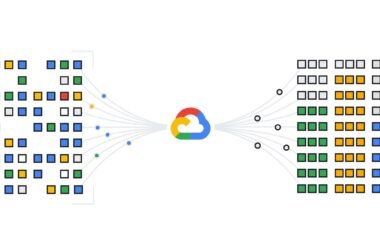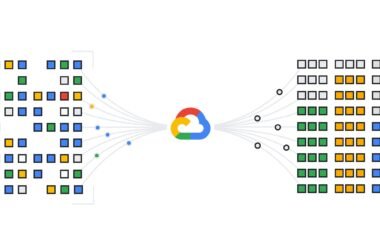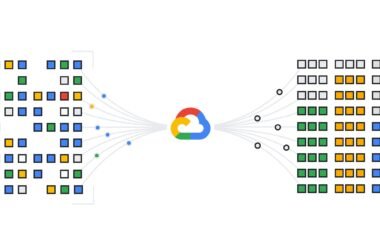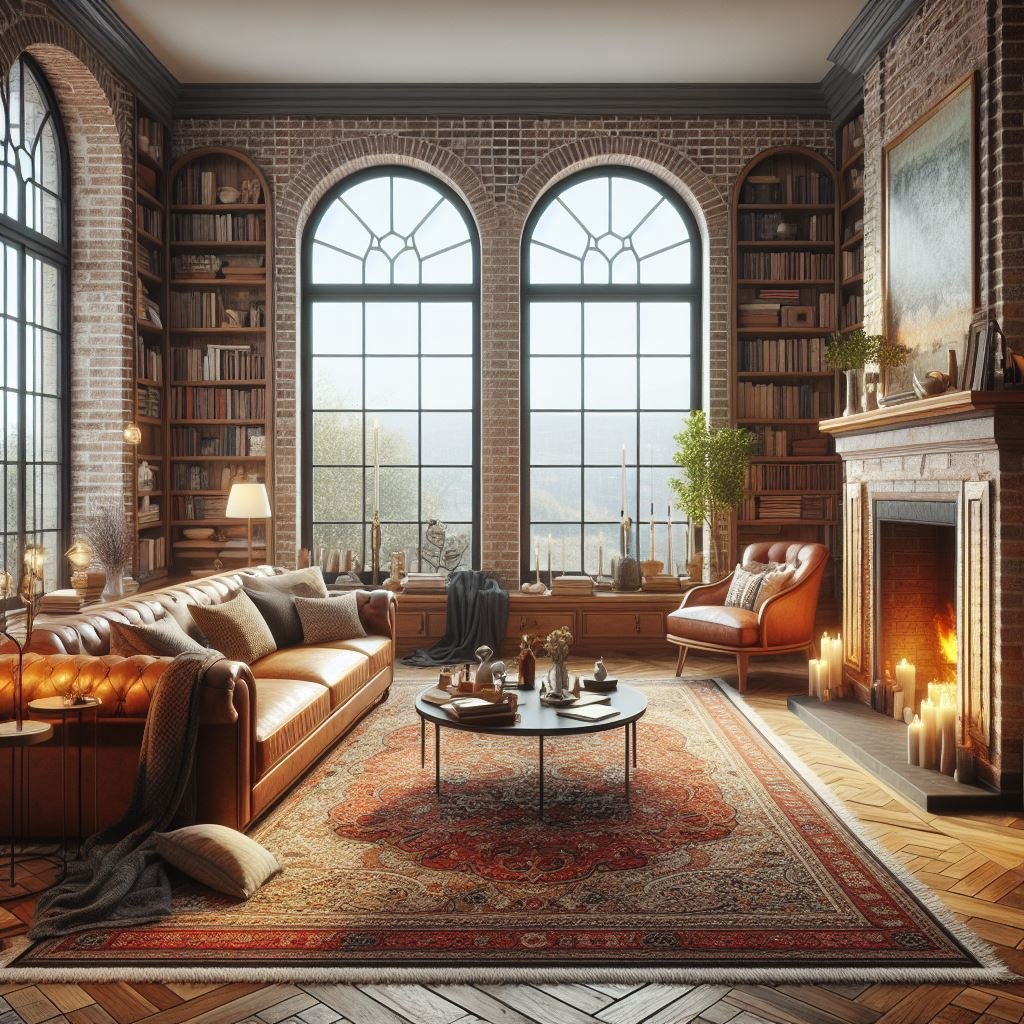Table of Contents
Unleash the Power of AI in Interior Design: From Inspiration to Reality
In the rapidly evolving world of interior design, artificial intelligence (AI) is making its mark. With the integration of AI into the field, a new era of creativity, efficiency, and personalisation has emerged. From AI-driven virtual assistants to smart home technologies, AI is revolutionising the way we design and decorate our living spaces. In this article, we will explore the role of AI in interior design, focusing on how it has transformed the industry, empowered designers, and enhanced the overall home decor experience. Join us as we delve into the fascinating world where inspiration meets AI-powered innovation.
AI in Interior Design
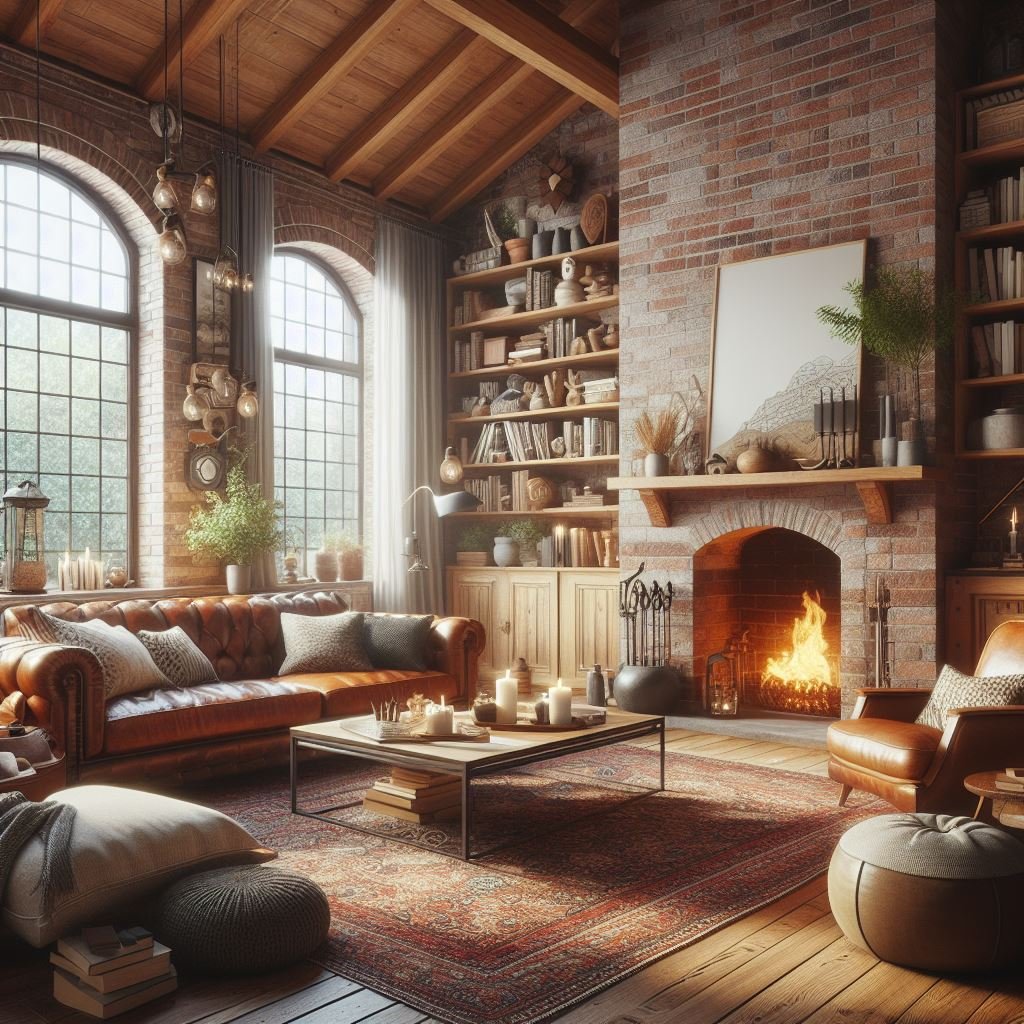

The role of AI in interior design cannot be understated. It has brought about a paradigm shift in the industry, enabling designers to reimagine spaces and create unique experiences for their clients. AI algorithms have the ability to analyse vast amounts of data – including design trends, customer preferences, and even psychological factors – to provide insights that help designers make informed decisions. By leveraging AI, designers can optimise their creative process, saving time and effort while maximising their potential for innovation.
Moreover, AI enriches the design process by offering tools that assist in generating ideas and visualising concepts. For instance, AI-powered software can produce realistic 3D renders of different design options, allowing clients to envision the final result before making any changes. By incorporating AI into interior design practices, professionals can iterate and refine their designs more effectively, resulting in improved outcomes and client satisfaction.
Furthermore, AI enhances collaboration between designers, clients, and other stakeholders. By centralising design data and streamlining communication channels, AI platforms enable smoother project management and foster more efficient teamwork. This not only saves time but also ensures that everyone involved in the design process is on the same page, working towards a shared vision.
AI-Powered Interior Design Tools
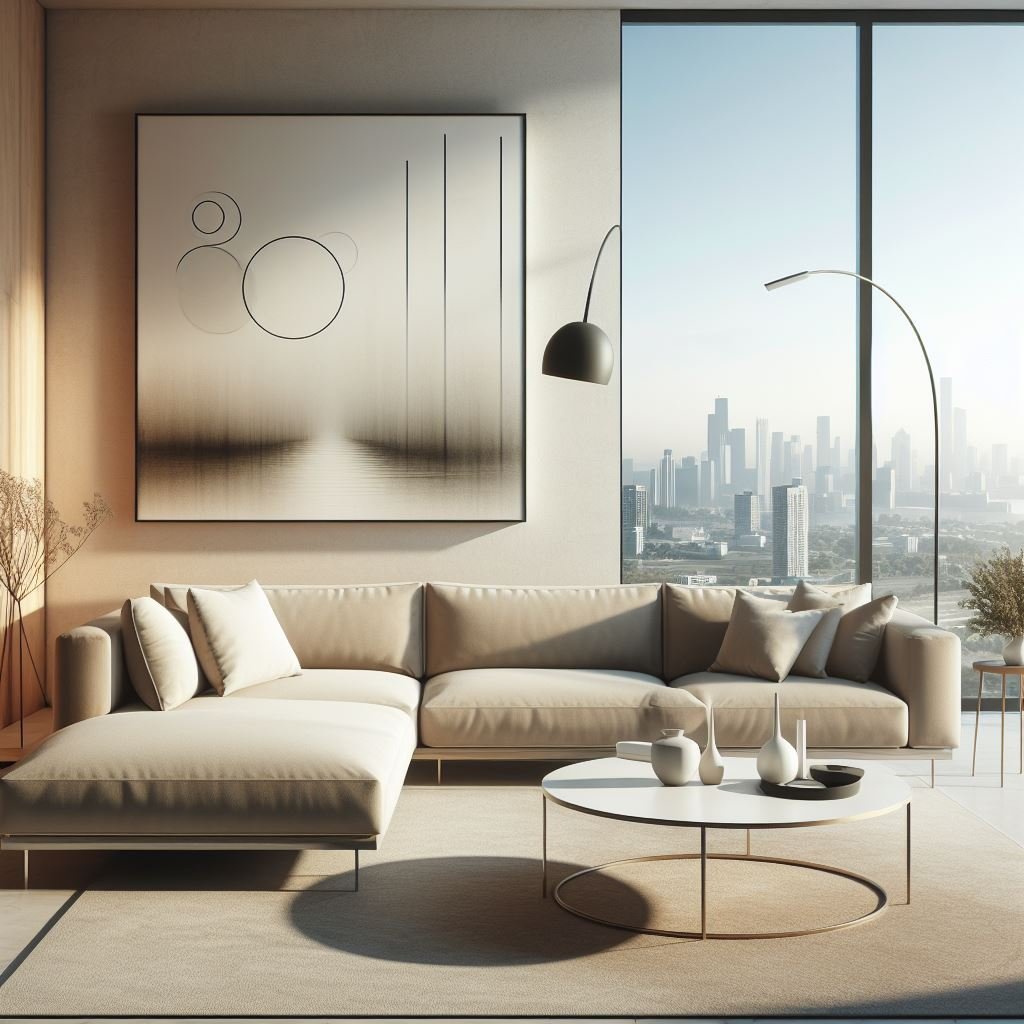

A variety of AI-powered tools and technologies have emerged to cater to the needs of interior designers. These tools range from virtual assistants that assist in design research and concept development to augmented reality (AR) and virtual reality (VR) tools that enable immersive experiences for both designers and clients.
For example, virtual assistants powered by AI can suggest design ideas based on client preferences, previous projects, and industry trends. These intelligent assistants become a valuable resource, providing a wealth of inspiration and giving designers access to a vast library of design elements and materials.
AR and VR tools allow designers and clients to visualize designs in an interactive and immersive manner. With AR, clients can virtually place furniture and decor items in their own space, providing a realistic preview of how the design will look. VR takes it a step further by creating fully immersive virtual environments, allowing clients to experience the design firsthand. These technologies remove the guesswork and uncertainty from the design process, ensuring that clients are confident and satisfied with their choices.
Smart Home Integration and AI
AI has also found its way into our homes through smart home technologies. These technologies leverage AI algorithms to automate and optimise various aspects of home decor and functionality. From voice-activated lighting systems to AI-driven climate control, smart home integration enhances both convenience and aesthetics.
For instance, AI-powered lighting systems can analyse natural light patterns, occupancy patterns, and personal preferences to optimise lighting conditions in each room. This not only creates a more comfortable and inviting atmosphere but also helps conserve energy by adjusting lighting levels based on the immediate needs of the occupants.
AI-enabled climate control systems can learn individual temperature preferences and automatically adjust to create a comfortable environment. By analysing external weather data and considering factors such as humidity and occupancy, these systems optimise energy consumption while maintaining optimal comfort levels.
Improving User Experience with AI
AI has significantly improved the user experience in interior design. Online platforms and applications utilise AI algorithms to provide personalised recommendations and design inspiration. By understanding user preferences, browsing history, and contextual information, AI algorithms curate design ideas that resonate with individual tastes.
Additionally, AI-powered chatbots and virtual assistants offer personalised support and guidance throughout the design journey. Users can interact with these virtual assistants to ask questions, seek advice, and receive real-time feedback on their design choices. This not only enhances the user experience but also empowers users to make informed decisions by tapping into the expertise of AI-driven systems.
Personalisation and Customisation with AI
AI brings a new level of personalisation to interior design, allowing homeowners to create spaces that reflect their unique styles and preferences. By analysing user data and understanding individual tastes, AI algorithms can generate customised design recommendations tailored to each client.
Moreover, AI-driven platforms enable users to customise furniture, decor items, and even entire floor plans according to their specific needs. This level of personalisation ensures that every element of the design aligns with the homeowner’s vision, creating a truly bespoke living space.
Comparison of AI Interior Design Websites
The emergence of AI in interior design has led to the rise of numerous AI-powered websites and platforms. These platforms provide users with the tools and resources they need to explore, visualise, and implement their design ideas.
Each platform offers unique features and benefits, catering to different design preferences and requirements. By comparing these platforms, users can identify the ones that align with their needs and leverage AI-powered tools to create stunning interior designs.
Home Designs AI
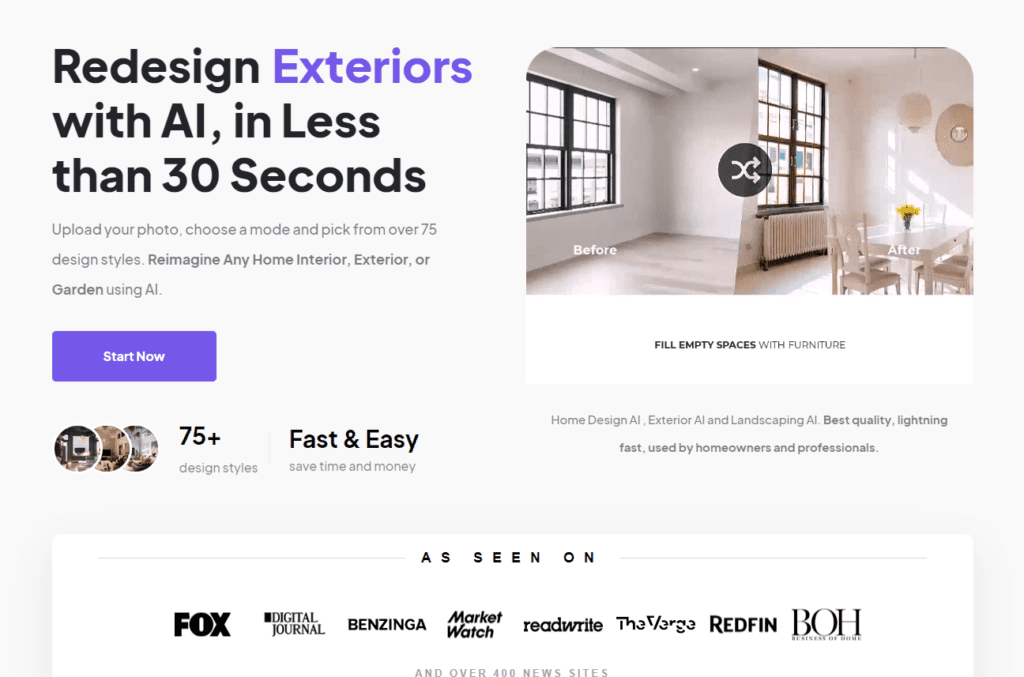

HomeDesigns AI revolutionizes the way you envision your living space. With just a few clicks, this cutting-edge platform transforms your ideas into stunning realities. Simply upload a photo, select from over 75 design styles, and watch as your home’s interior, exterior, or garden is reimagined using the power of AI. Whether you’re seeking a cozy farmhouse aesthetic, a sleek modern look, or a lush garden paradise, HomeDesigns AI brings your vision to life with ease and precision. Say goodbye to guesswork and hello to personalized perfection with HomeDesigns AI.
Interior AI
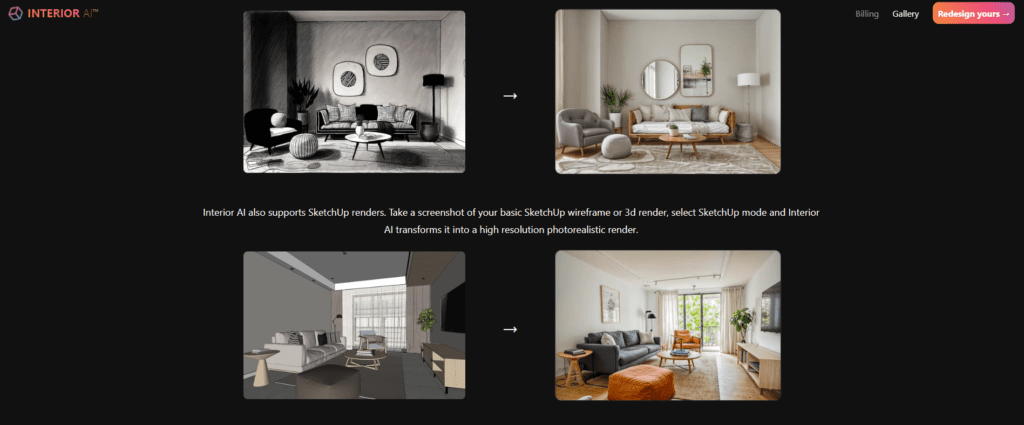

InteriorAI.com is revolutionizing the way people create and interact with personalized AI characters through its innovative platform. By simply uploading a selfie, users can generate lifelike AI characters that accurately represent their appearance. From there, the possibilities are endless as users can place their AI characters in various settings, outfits, actions, and expressions, all without the need for an expensive photographer.
One of the standout features of InteriorAI.com is its user-friendly studio, which provides access to a range of photo shoot preset templates, prompts, and even the ability to replicate photos of others. This empowers users to unleash their creativity and bring their visions to life with ease.
Spacely.ai
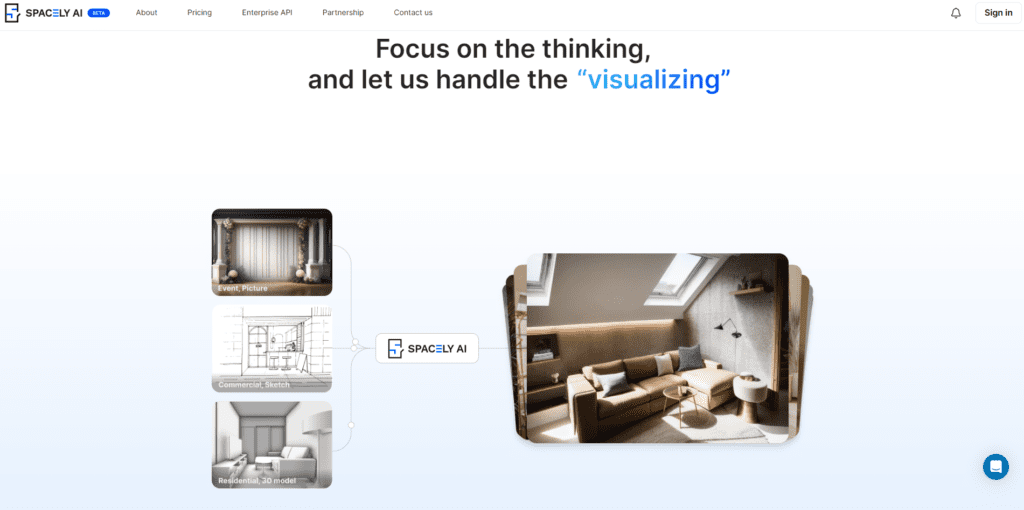

Spacely.AI is your go-to destination for streamlining interior design processes and unleashing creativity like never before. This cutting-edge platform empowers users to revolutionize their workflow by offering an innovative design tool that generates high-quality renders in mere minutes.
Whether you’re envisioning a cozy bedroom retreat, a chic living room, or any other spatial area, Spacely.AI provides the inspiration and tools you need to bring your dream space to life effortlessly. Say goodbye to tedious design iterations and hello to a seamless design experience.
Conclusion
In conclusion AI has revolutionised the field of interior design transforming the way we approach home decor. With the advent of AI-powered tools and technologies designers can now leverage the power of machine learning and data analytics to create stunning and personalised spaces. AI algorithms can analyse an individual’s preferences lifestyle and even social media activity to suggest design options that align with their tastes and needs. This not only saves time and effort but also ensures a higher level of customer satisfaction. By embracing AI in interior design homeowners can unlock a whole new realm of possibilities allowing them to transform their living spaces into truly captivating and personalised environments. So whether you’re looking to redecorate or embark on a complete home makeover consider integrating AI-powered interior design solutions to optimise your home decor journey. Don’t miss out on the transformative potential of AI in interior design; take action today and unlock a world of endless possibilities for your home. Transform your home decor with AI now!
How is AI transforming interior design?
AI is revolutionizing interior design by offering innovative solutions that streamline the design process. With AI-powered tools and technologies designers can now automate tasks such as space planning furniture placement and colour selection. AI algorithms can analyse vast amounts of data to generate personalised design recommendations based on users’ preferences budgets and style. This not only saves time for both designers and clients but also ensures that the final design is tailored to individual needs.
What are the benefits of using AI in interior design?
Integrating AI in interior design brings several advantages. Firstly it enhances creativity and inspiration by providing designers with access to a vast library of design ideas styles and trends from around the world. AI tools can also help designers optimise space utilization ensuring functional and efficient layouts. Moreover AI-powered software can generate virtual 3D models and simulations allowing clients to visualize the final design before implementation. This helps to reduce errors and improve client satisfaction by providing a realistic preview of the end result.
How does AI help in transforming home decor?
AI offers valuable assistance in transforming home decor by facilitating personalised recommendations and enabling smart decision-making. Through machine learning algorithms AI systems learn patterns and preferences to provide tailored product suggestions based on users’ individual tastes and requirements. For example an AI-powered home decor app can analyse a user’s past purchases browsing history and style preferences to suggest furniture accessories and colour schemes that align with their unique aesthetic. By leveraging AI individuals can effortlessly discover new decor options and create spaces that truly reflect their personality.
How does AI-powered virtual reality impact interior design?
AI-powered virtual reality (VR) has a profound impact on interior design as it allows designers and clients to explore and experience spaces in a more immersive manner. By putting on a VR headset users can virtually walk through a fully rendered 3D model of their future space visualizing details materials and even lighting conditions. This technology empowers clients to make informed decisions as they can see how different design elements and modifications will affect the overall look and feel of their space. It also enables designers to communicate their ideas more effectively and collaborate with clients remotely.
Can AI assist in sustainable interior design practices?
Absolutely. AI can play a significant role in promoting sustainable interior design practices. By analysing data on energy consumption material durability and environmental impact AI tools can help designers make informed choices that minimise the carbon footprint of a project. AI algorithms can suggest eco-friendly materials energy-efficient appliances and sustainable design strategies that reduce waste and maximise resource utilization. By optimising energy consumption and embracing sustainable design principles AI helps create healthier living spaces while reducing the environmental impact of the interior design industry.
What is the future potential of AI in interior design?
The future potential of AI in interior design is vast. As AI technologies continue to evolve we can expect more advanced tools that effortlessly blend human creativity with intelligent automation. AI-powered software may become capable of generating custom furniture designs based on individual needs and preferences. Virtual reality experiences could become even more immersive and interactive allowing users to virtually touch and feel the selected materials. Additionally AI might facilitate seamless integration between various home automation systems enabling voice-activated control of lighting temperature and other smart features. The possibilities are endless as AI continues to revolutionize the interior design industry.


